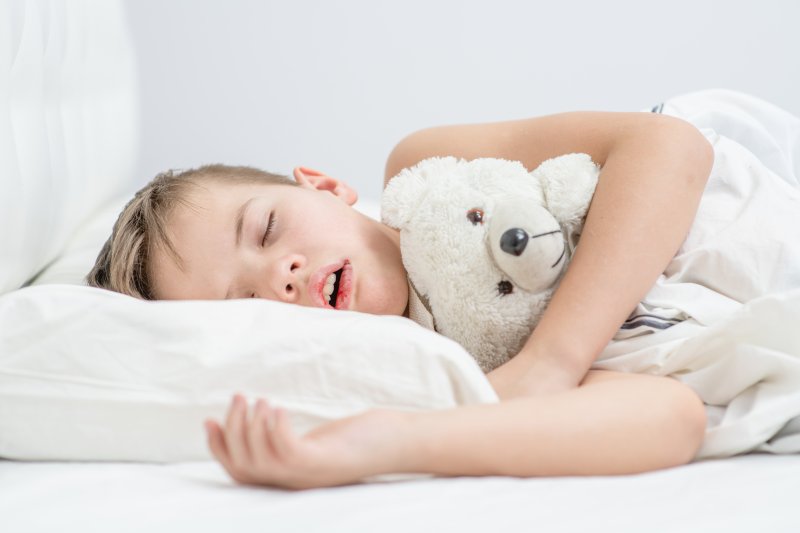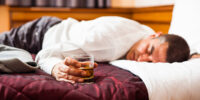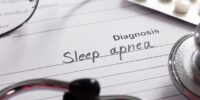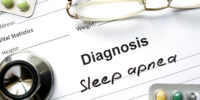How To Create A Sleep-Friendly Environment To Manage Sleep Apnea?

Sleep apnea is a common sleep disorder that affects millions of individuals worldwide. It is characterized by pauses in breathing or shallow breaths during sleep, leading to poor sleep quality and daytime fatigue. Creating a sleep-friendly environment is crucial for managing sleep apnea and improving overall sleep health.
This article aims to provide a comprehensive guide on how to create an optimal sleep environment to alleviate the symptoms of sleep apnea. The recommended strategies include:
- Evaluating the bedroom setup
- Reducing allergens and irritants
- Creating a relaxing atmosphere
- Establishing a consistent sleep routine
- Optimizing sleep position
- Managing stress and anxiety
- Seeking professional help and treatment
- Tracking progress for necessary adjustments.
By implementing these strategies, individuals with sleep apnea can significantly improve their sleep quality and overall well-being.
Key Takeaways
- Evaluating and optimizing the bedroom setup, including ensuring darkness, maintaining a cool temperature, minimizing noise, and decluttering the space.
- Reducing allergens and irritants by regularly cleaning and vacuuming the bedroom, using hypoallergenic bedding materials and pillow covers, and keeping the room well-ventilated.
- Creating a relaxing atmosphere through the use of soft lighting, calming colors, relaxation techniques, and potentially incorporating aromatherapy or white noise machines.
- Establishing a consistent sleep routine by setting regular bedtime and wake-up time, avoiding stimulants and electronics before bed, and incorporating relaxing activities into the evening routine.
Evaluate Your Bedroom Setup
Creating a conducive bedroom environment is crucial for effectively managing sleep apnea and promoting restful sleep. One of the first steps in creating a sleep-friendly environment is to evaluate your bedroom setup.
Begin by ensuring that your bedroom is dark, as exposure to light can disrupt sleep patterns. Consider using blackout curtains or blinds to block out any external sources of light.
Additionally, it is important to maintain a cool and comfortable temperature in the bedroom, as excessive heat can interfere with sleep quality. Adequate ventilation and the use of a fan or air conditioner can help regulate the temperature.
Furthermore, minimizing noise in the bedroom is essential for a peaceful sleep. Consider using earplugs or a white noise machine to drown out any disruptive sounds.
Finally, decluttering the bedroom and creating a clean and organized space can contribute to a more relaxed and peaceful sleep environment.
Reduce Allergens and Irritants
Reducing allergens and irritants in the surrounding environment can contribute to a more conducive atmosphere for individuals with sleep apnea.
Allergens such as dust mites, pet dander, and pollen can trigger allergic reactions and exacerbate sleep apnea symptoms. To minimize exposure to these irritants, it is important to regularly clean and vacuum the bedroom, including the mattress and pillows.
Using hypoallergenic bedding materials and pillow covers can also help reduce allergen exposure. Additionally, keeping the bedroom well-ventilated and using an air purifier can help filter out airborne irritants.
It is also advisable to avoid smoking and the use of scented products, as they can further aggravate respiratory symptoms.
By creating a clean and allergen-free sleep environment, individuals with sleep apnea can potentially experience improved sleep quality and reduced symptoms.
Create a Relaxing Atmosphere
This paragraph will discuss the importance of creating a relaxing atmosphere to manage sleep apnea.
One key point is to use soft lighting and calming colors in the bedroom. This can help create a soothing environment that promotes relaxation and sleep.
Additionally, incorporating relaxation techniques before bed, such as deep breathing exercises or progressive muscle relaxation, can further enhance the overall atmosphere of relaxation.
Finally, considering the use of aromatherapy or white noise machines can provide additional sensory cues that promote a sense of calm and tranquility, helping to improve sleep quality for individuals with sleep apnea.
Use Soft Lighting and Calming Colors
Soft lighting and calming colors can be employed to cultivate a sleep-friendly environment that may help manage sleep apnea.
Firstly, soft lighting, such as dimmed or warm-toned bulbs, can create a relaxing ambiance, promoting a sense of calmness and tranquility. This type of lighting can be achieved using bedside lamps or wall sconces with adjustable brightness settings.
Secondly, incorporating calming colors in the bedroom decor can contribute to a soothing atmosphere. Pastel shades, such as light blue or lavender, are often associated with relaxation and can help reduce stress levels. Additionally, earthy tones like beige or sage green can evoke a sense of serenity. It is important to avoid bright or intense colors, as they can stimulate the brain and disrupt sleep patterns.
By utilizing soft lighting and calming colors, individuals with sleep apnea can create an environment conducive to restful sleep.
Incorporate Relaxation Techniques Before Bed
Incorporating relaxation techniques before bedtime can contribute to a more peaceful and restorative sleep experience for individuals with sleep apnea.
The use of relaxation techniques such as deep breathing exercises, progressive muscle relaxation, and meditation can help reduce stress and anxiety, which are common triggers for sleep apnea episodes.
Deep breathing exercises involve taking slow, deep breaths in through the nose and exhaling slowly through the mouth.
Progressive muscle relaxation involves tensing and then relaxing different muscle groups, promoting a state of physical relaxation.
Meditation techniques, such as mindfulness meditation, can help calm the mind and promote a sense of tranquility.
By incorporating these relaxation techniques into a nightly routine, individuals with sleep apnea can create a sleep-friendly environment that enhances their overall sleep quality and reduces the frequency and severity of sleep apnea episodes.
Consider Aromatherapy or White Noise Machines
Consider utilizing aromatherapy or white noise machines as potential strategies to enhance the quality of sleep for individuals with sleep apnea. Aromatherapy involves using essential oils to create a calming and soothing atmosphere before sleep. Lavender, chamomile, and bergamot are popular choices due to their relaxing properties. These oils can be diffused or applied topically to promote relaxation and reduce anxiety, potentially improving sleep quality.
On the other hand, white noise machines produce a consistent sound that masks other noises in the environment, helping individuals with sleep apnea fall asleep and stay asleep. These machines can create a soothing background noise that drowns out disruptive sounds and promotes a more restful sleep. Experimenting with different scents or white noise sounds can help individuals find the most effective option for their sleep environment.
- Lavender essential oil: Known for its calming effects, lavender can help reduce anxiety and promote relaxation.
- Chamomile essential oil: Used for centuries as a natural remedy for sleep problems, chamomile can induce feelings of tranquility.
- Bergamot essential oil: This oil has a citrusy scent and can help alleviate stress and anxiety, creating a peaceful atmosphere.
- White noise machines: These devices produce sounds like rain, waves, or fan noise, which can help drown out background noises and promote better sleep.
- Experimentation: It may be necessary to try different scents or white noise sounds to find the most effective option for improving sleep quality.
Establish a Consistent Sleep Routine
Establishing a consistent sleep routine is crucial for managing sleep apnea.
One key point is to set a regular bedtime and wake-up time to regulate the body’s internal clock. This consistency helps optimize sleep quality and ensures a sufficient duration of sleep.
Additionally, avoiding stimulants and electronics before bed is essential as they can disrupt the sleep-wake cycle and hinder the ability to fall asleep.
Finally, incorporating relaxing activities into the evening routine, such as reading or taking a warm bath, can promote relaxation and prepare the body for a restful night’s sleep.
Set a Regular Bedtime and Wake-Up Time
Maintaining a consistent sleep schedule by setting a regular bedtime and wake-up time can help individuals with sleep apnea create a sleep-friendly environment. Having a regular sleep routine allows the body to establish a natural sleep-wake cycle, which can improve the quality and duration of sleep.
By going to bed and waking up at the same time every day, individuals with sleep apnea can train their bodies to recognize when it is time to sleep and when it is time to wake up. This regularity helps to regulate the body’s internal clock and promotes a more restful sleep.
Additionally, sticking to a consistent sleep schedule can also aid in the effectiveness of other sleep apnea management strategies, such as using continuous positive airway pressure (CPAP) therapy.
Overall, setting a regular bedtime and wake-up time is a simple yet effective way to create a sleep-friendly environment for individuals with sleep apnea.
Avoid Stimulants and Electronics Before Bed
Avoiding stimulants and electronic devices before bed can significantly improve the quality of sleep and enhance overall well-being. By eliminating these stimulating factors, individuals with sleep apnea can create a sleep-friendly environment that promotes restful sleep. Here are four ways in which avoiding stimulants and electronics before bed can positively impact sleep:
- Reduces exposure to blue light emitted by electronic devices, which can suppress melatonin production and disrupt the sleep-wake cycle.
- Minimizes the intake of stimulants such as caffeine, nicotine, and alcohol, which can interfere with sleep patterns and exacerbate sleep apnea symptoms.
- Promotes relaxation and a calm mind by disconnecting from digital distractions and allowing the brain to unwind before sleep.
- Enhances the effectiveness of sleep apnea treatments, such as continuous positive airway pressure (CPAP) therapy, by improving sleep quality and reducing interruptions.
By following these guidelines, individuals can create an environment conducive to better sleep and effectively manage their sleep apnea symptoms.
Incorporate Relaxing Activities into Your Evening Routine
Incorporating relaxing activities into your evening routine can contribute to a tranquil and serene atmosphere, fostering a sense of calmness and promoting a restful state before bed.
Engaging in activities such as reading a book, practicing gentle yoga or meditation, or taking a warm bath can help relax both the mind and body.
Reading a book can divert attention from daily stressors, while engaging in gentle yoga or meditation can promote deep relaxation and reduce muscle tension.
Taking a warm bath before bed can also aid in relaxation by soothing tired muscles and preparing the body for sleep.
Additionally, incorporating these activities into a consistent evening routine can signal to the body that it is time to unwind and prepare for rest, further improving sleep quality for individuals with sleep apnea.
Optimize Your Sleep Position
Enhancing your sleep position can significantly improve your sleep quality and alleviate the symptoms of sleep apnea. Finding the optimal sleep position can help keep the airways open and reduce the likelihood of breathing difficulties during sleep.
Consider the following tips to optimize your sleep position:
- Sleeping on your side: This position can prevent the collapse of the airways, reducing the occurrence of apnea episodes.
- Elevating your head: Using a pillow or an adjustable bed can help keep the airways open by elevating the head and reducing the pressure on the throat.
- Avoiding sleeping on your back: Sleeping on your back can lead to the relaxation of the throat muscles, potentially obstructing the airways and causing breathing difficulties.
By implementing these adjustments to your sleep position, you can create a sleep-friendly environment that promotes better sleep and manages sleep apnea symptoms effectively.
Manage Stress and Anxiety
To effectively address stress and anxiety, it is important to implement strategies that promote relaxation and emotional well-being. For individuals with sleep apnea, managing stress and anxiety is crucial in creating a sleep-friendly environment. Stress and anxiety can significantly impact sleep quality and exacerbate symptoms of sleep apnea.
One strategy to manage stress and anxiety is practicing relaxation techniques, such as deep breathing exercises, progressive muscle relaxation, and mindfulness meditation. Engaging in regular physical activity can also help reduce stress and promote better sleep.
Additionally, establishing a consistent bedtime routine that includes activities that promote relaxation, such as reading or taking a warm bath, can signal the body to wind down and prepare for sleep. Finally, seeking support from a mental health professional can provide valuable guidance and tools to manage stress and anxiety effectively.
By implementing these strategies, individuals with sleep apnea can create a sleep-friendly environment that supports better sleep quality.
Seek Professional Help and Treatment
Consulting with a sleep specialist or physician is essential for individuals seeking professional help and treatment for sleep apnea. These experts can provide a comprehensive evaluation of the condition and recommend appropriate treatment options based on the severity and specific needs of the individual.
Common treatment options for sleep apnea include continuous positive airway pressure (CPAP) machines and oral appliances, which can help alleviate symptoms and improve sleep quality.
Additionally, it is important to follow up with regular sleep studies and check-ups to monitor the effectiveness of the chosen treatment and make any necessary adjustments.
Consult with a Sleep Specialist or Physician
Collaborating with a sleep specialist or physician is an effective strategy for individuals seeking to establish a sleep-friendly environment to manage sleep apnea. Sleep specialists are trained professionals who specialize in diagnosing and treating sleep disorders, including sleep apnea. By consulting with a sleep specialist, individuals can receive a comprehensive evaluation of their sleep patterns and receive personalized recommendations for creating a sleep-friendly environment. Sleep specialists may suggest lifestyle modifications, such as maintaining a regular sleep schedule and avoiding stimulants before bedtime. They may also recommend the use of continuous positive airway pressure (CPAP) therapy, which helps keep the airway open during sleep. Additionally, sleep specialists can provide guidance on creating a comfortable sleep environment, including recommendations for mattress and pillow selection. Collaborating with a sleep specialist or physician ensures that individuals receive expert advice and personalized treatment options to effectively manage sleep apnea.
| Aspect | Importance | Recommendation |
|---|---|---|
| Lifestyle Modifications | High | Maintain regular sleep schedule, avoid stimulants before bedtime |
| CPAP Therapy | High | Use continuous positive airway pressure therapy |
| Sleep Environment | Medium | Choose appropriate mattress and pillow for comfort |
| Follow-up Care | Low | Regularly visit the sleep specialist for monitoring and adjustments |
Explore Treatment Options such as CPAP or Oral Appliances
After consulting with a sleep specialist or physician, the next step in managing sleep apnea is to explore treatment options.
Two common treatment options for sleep apnea are continuous positive airway pressure (CPAP) therapy and oral appliances.
CPAP therapy involves wearing a mask over the nose or nose and mouth while sleeping. The mask is connected to a machine that delivers a continuous flow of air pressure, which helps keep the airway open during sleep.
Oral appliances, on the other hand, are custom-made devices that are worn in the mouth. These appliances work by repositioning the jaw and tongue to keep the airway open.
To choose the most suitable treatment option, it is important to consider factors such as the severity of sleep apnea, personal preferences, and any underlying medical conditions.
It is recommended to discuss these options with a sleep specialist or physician to determine the most effective treatment approach.
Follow Up with Regular Sleep Studies and Check-Ups
Regular follow-up sleep studies and check-ups play a crucial role in monitoring the progress and effectiveness of the chosen treatment option for sleep apnea. Sleep studies, such as polysomnography, are conducted to assess the severity of sleep apnea and evaluate the efficacy of the treatment. These studies measure various parameters, including oxygen levels, respiratory effort, and sleep stages, providing objective data to evaluate the effectiveness of the treatment.
Additionally, regular check-ups with healthcare professionals allow for adjustments in treatment plans based on the patient’s response and provide an opportunity to address any concerns or issues. By monitoring the progress of the chosen treatment option through sleep studies and check-ups, healthcare professionals can ensure that the patient’s sleep apnea is effectively managed and minimize the risk of complications associated with untreated or poorly managed sleep apnea.
Track Your Progress and Adjust as Needed
To effectively manage sleep apnea, it is essential to continuously monitor and adapt one’s progress in order to create a sleep-friendly environment. Tracking your progress allows you to assess the effectiveness of your current sleep habits and interventions.
Regularly evaluating your sleep patterns and symptoms can help identify any improvements or setbacks in managing sleep apnea. By keeping a sleep diary or using sleep tracking devices, you can record important data such as sleep duration, quality, and the occurrence of apneas or disruptions.
This information can then be used to make necessary adjustments to your sleep environment and treatment plan. For instance, if you notice an increase in apneas or poor sleep quality, you may need to consult with your healthcare provider to explore alternative interventions or adjust your current treatment options.
Regularly tracking your progress is crucial to successfully managing sleep apnea and improving your overall sleep health.
Frequently Asked Questions
What are the common symptoms of sleep apnea?
Common symptoms of sleep apnea include loud snoring, episodes of breathing cessation during sleep, gasping or choking during sleep, excessive daytime sleepiness, morning headaches, difficulty concentrating, irritability, and restless sleep.
Can sleep apnea be cured completely?
Sleep apnea cannot be cured completely. However, there are various treatment options available to manage the condition, including continuous positive airway pressure (CPAP) therapy, lifestyle changes, and surgical interventions, which can significantly improve symptoms and quality of life.
Are there any natural remedies or lifestyle changes that can help manage sleep apnea?
Natural remedies and lifestyle changes can help manage sleep apnea. Examples include weight loss, regular exercise, avoiding alcohol and sedatives, sleeping on your side, and using nasal strips or a humidifier.
How long does it typically take to see improvement in sleep apnea symptoms after implementing the recommended changes?
The time it takes to see improvement in sleep apnea symptoms after implementing recommended changes varies depending on the individual. It can range from a few weeks to several months. Regular monitoring and follow-up with healthcare professionals is essential to track progress.
What are the potential risks of untreated sleep apnea?
Untreated sleep apnea can lead to various health risks, including high blood pressure, heart disease, stroke, diabetes, and depression. It can also contribute to daytime fatigue, impaired cognition, and an increased risk of accidents.











